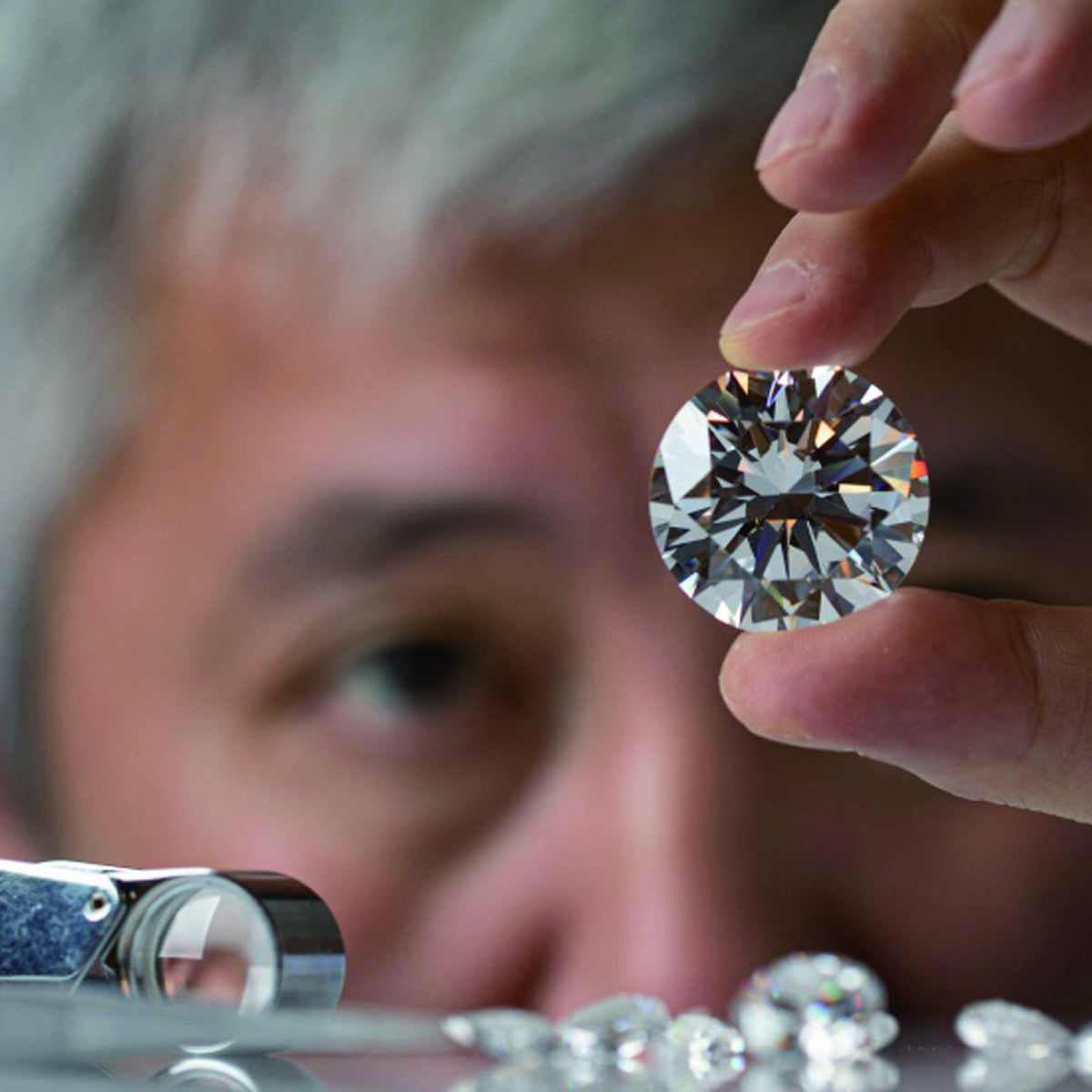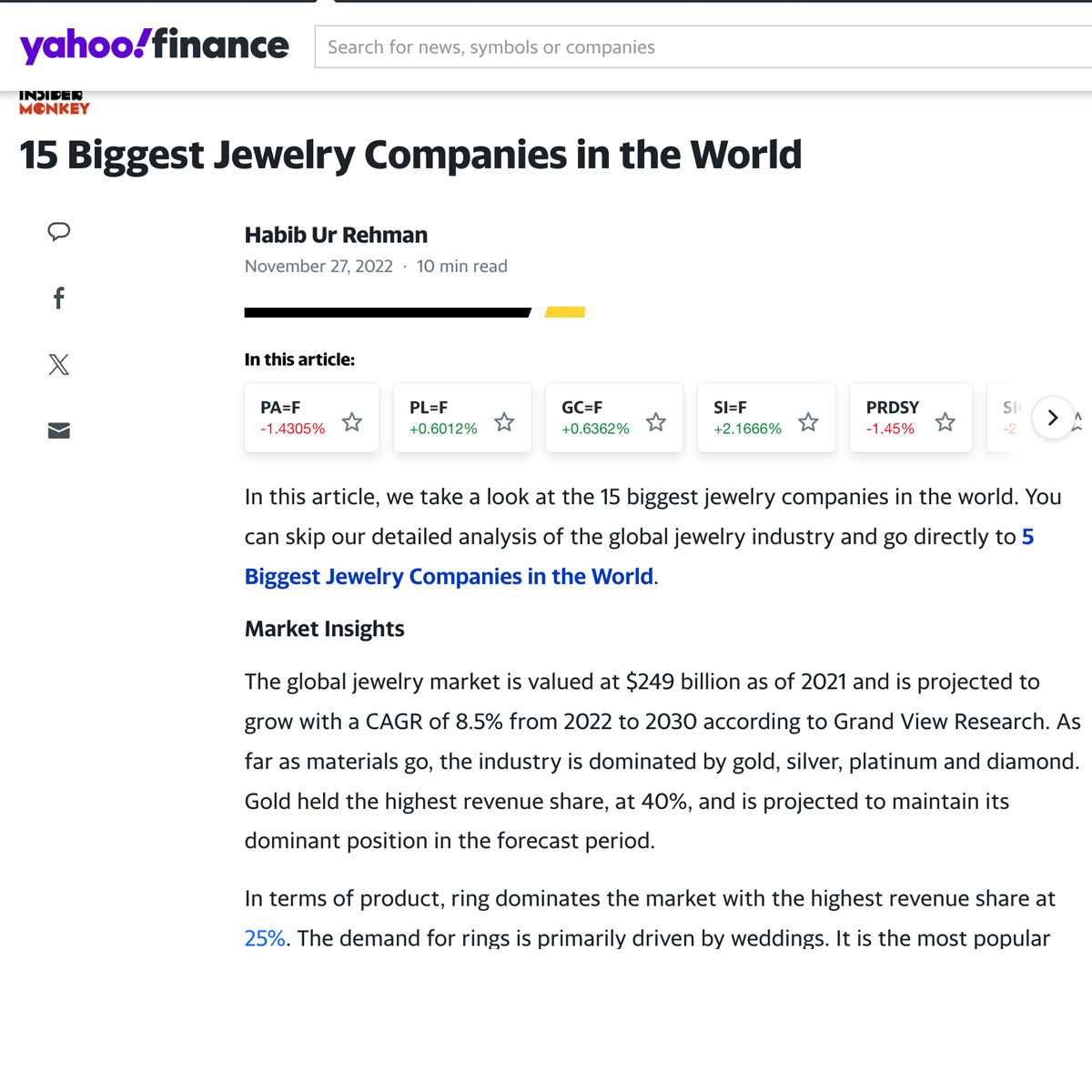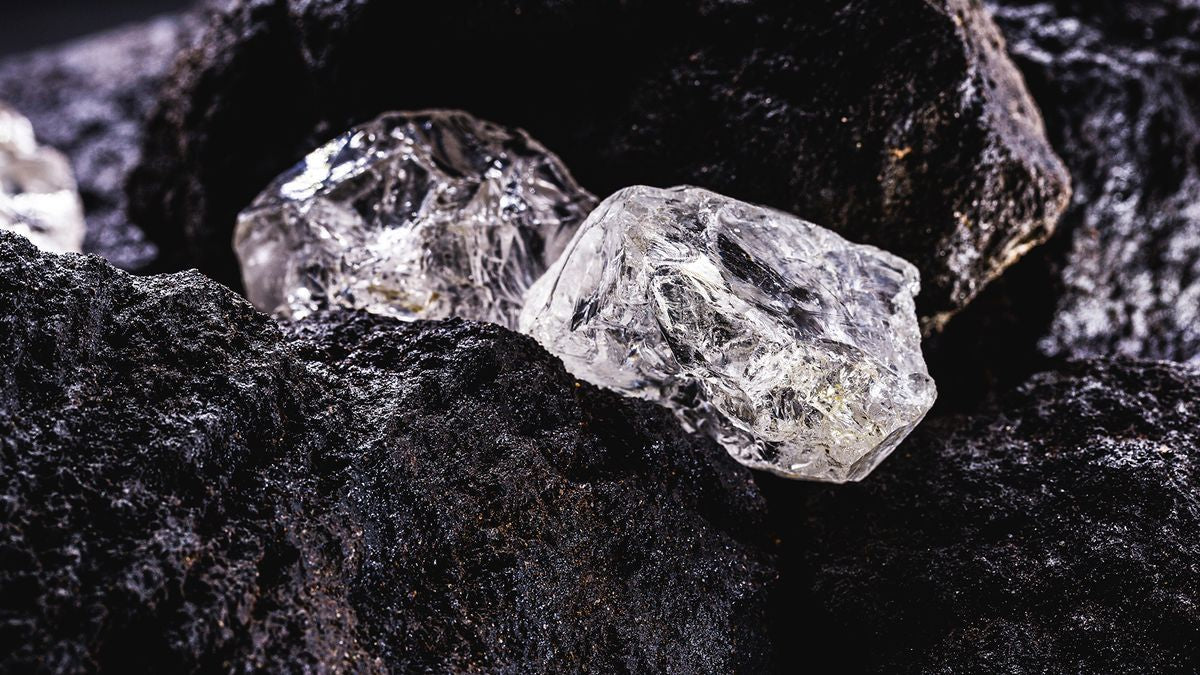
Jewel Identity: Lab-Grown Gems VS Properly
Recent interest in the proliferation of Lab-Grown Diamonds (LGDs) factories in India has left many diamond lovers wondering whether they could one day oust the natural rocks from the jewellery market. These man-made beauties display the same physical, chemical and optical characteristics as diamonds found deep in the earth. Put simply, are they here to stay?
Surprisingly, synthetic diamonds have been sparkling among us for decades. There are two ways to make LGDs: one is High-Pressure High Temperature (HPHT), involving a seed placed within pure graphite carbon and exposed to temperatures of about 1500°C; another is Chemical Vapour Deposition (CVD), which involves putting a seed in a sealed container filled with carbon-rich gas and heating to 800°C. HPHT diamonds have been around since the 1960s, but the real game changer, according to Roi Sheinfeld, Managing Partner of diamond manufacturer M&B Group, has been the more recent introduction of CVD-made LGDs. “This is a much more efficient and cost-friendly process. Also, the size of the reactor in the HPHD process is the size of a room, the CBD reactor is the size of a table,” he says.

Questions of quality
Of course, those interested in buying a diamond will naturally want to know whether the quality of LGDs can compare to those of natural diamonds. Sheinfeld affirms that, at the top of the scale, they are indistinguishable. “If you are taking a very high-quality growth and you are putting it next to a natural diamond, and both of them would be high-colour and high-clarity stones, the chance that me, as a professional diamond dealer and manufacturer, will notice if it is an LGD or a natural diamond is basically zero,” he says.
However, he suggests quality can vary from one factory to another and buyers will need to be careful. Trustworthy sources are essential when procuring diamonds.
He compared LGDs grown under professional and less expert hands: “There is a very wide spectrum of quality. I am not saying that the end product is not the same crystal or hardness level as a natural diamond. In terms of quality, usually, lowend growth you see the certificate will be F colour like a better quality LGD, but it will not be lucid as the better quality LGD diamond,” he says.
He then adds: ”A high-end growth of lab diamond will shine and sparkle exactly like a good quality natural diamond.”
Sheinfeld sees this embryonic industry from all angles as his company is heavily involved in both natural and LGDs. A big part of their business is rough diamond sourcing, polishing and manufacturing, including polishing very expensive and unique stones. In the LGD sector, they are one of the biggest contract holders with Diamond Foundry, a US-based factory that makes huge quantities of cultured diamonds.

According to Roi, a two-carat natural diamond that costs in a shop around US$30-32k will cost around US$4500-5000 for an LGD with the same specs. Fun jewellery items like tennis bracelets and eternity rings, once the stones are set within the jewellery, lose much of their resale value. “If we were to try to take all of the stones out, probably you are going to damage some of the stones, or you cannot resell those five points that you took out of the tennis bracelet. I think in this segment, a lot of the people that are buying natural would move to buy lab-grown.
He also notes that lower-grade natural diamonds usually come without certificates so this could be a further incentive to consider LGDs.
No resale value
One of the main issues concerning LGDs is whether they hold value. On this issue, Sheinfeld is unequivocal. “It is very important to say that for the LGD there is no resale value whatsoever,” he declares, adding that this is the main advantage and disadvantage between the two products, as natural diamonds do usually hold some resale value.
He does not think this will change in the foreseeable future either. “Basically, you have endless production of something; I do not think it will ever be an investment per se.”
Luxury arousal
Despite these considerations, the luxury sector has been dipping its toes into LGDs. Last year LVMH Luxury Ventures, an investment arm within French luxury conglomerate LVMH Group, announced they had joined a US$90 million investment round in Lusix, an Israeli LGD factory. Industry rumours suggest other big conglomerates are entering the field.
“You are going to see more and more high-end fashion conglomerates getting into the field for sure. It is definitely here to stay,” says Sheinfeld.

Man-made diamonds offer luxury houses certain advantages: “I think using LGDs gives better precision and better quality control for a big brand that wants to do a big line of jewelry. It is easier to do it with LGDs than with natural diamonds.”
According to Sheinfeld, this potentially could have two effects on market pricing: the LGDs will become accessible, but will also ramp up the prestige factor of certain lines made of natural diamonds as discerning consumers will understand the complexities of their manufacture.
“Investment-grade diamonds that are appreciating over time are usually very large and very well-cut fancy shapes of high colour and high clarity,” he says.
Profit or loss?
Naresh Jain, CEO of Belgium-based Sanket BV, who is involved in fine jewellery, wonders whether labgrown diamonds can be profitable. “As production is increasing, the price for LGDs is getting lower and lower,” he says. “The value of LGD stock is depreciating at the end of each year due to surplus goods. I wonder how it can be a profitable business or an investment.”
“LGDs will be like silver [jewellery] or freshwater pearls. You need big volumes to sustain [their production], and on the other hand, a long-term high turnover is not easy. Falling prices and lesser acceptance will be the main hurdles,” he says.
Jain suggests industry players are trying to keep one foot in the LGD market, but nevertheless have no real confidence in their future. Despite this, he is certain that man-made diamonds will have a bearing on the price of their earthly counterparts in the long run.







